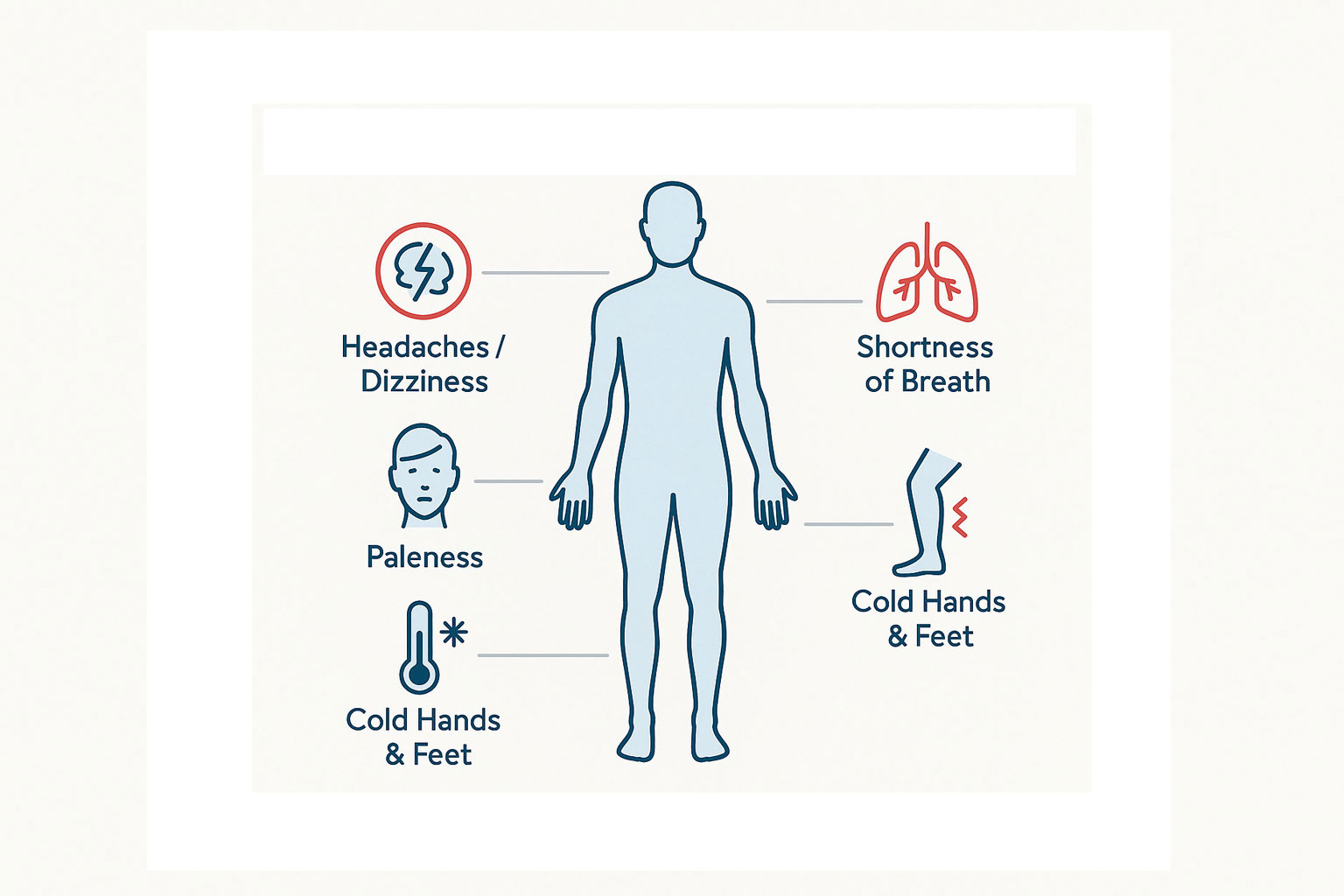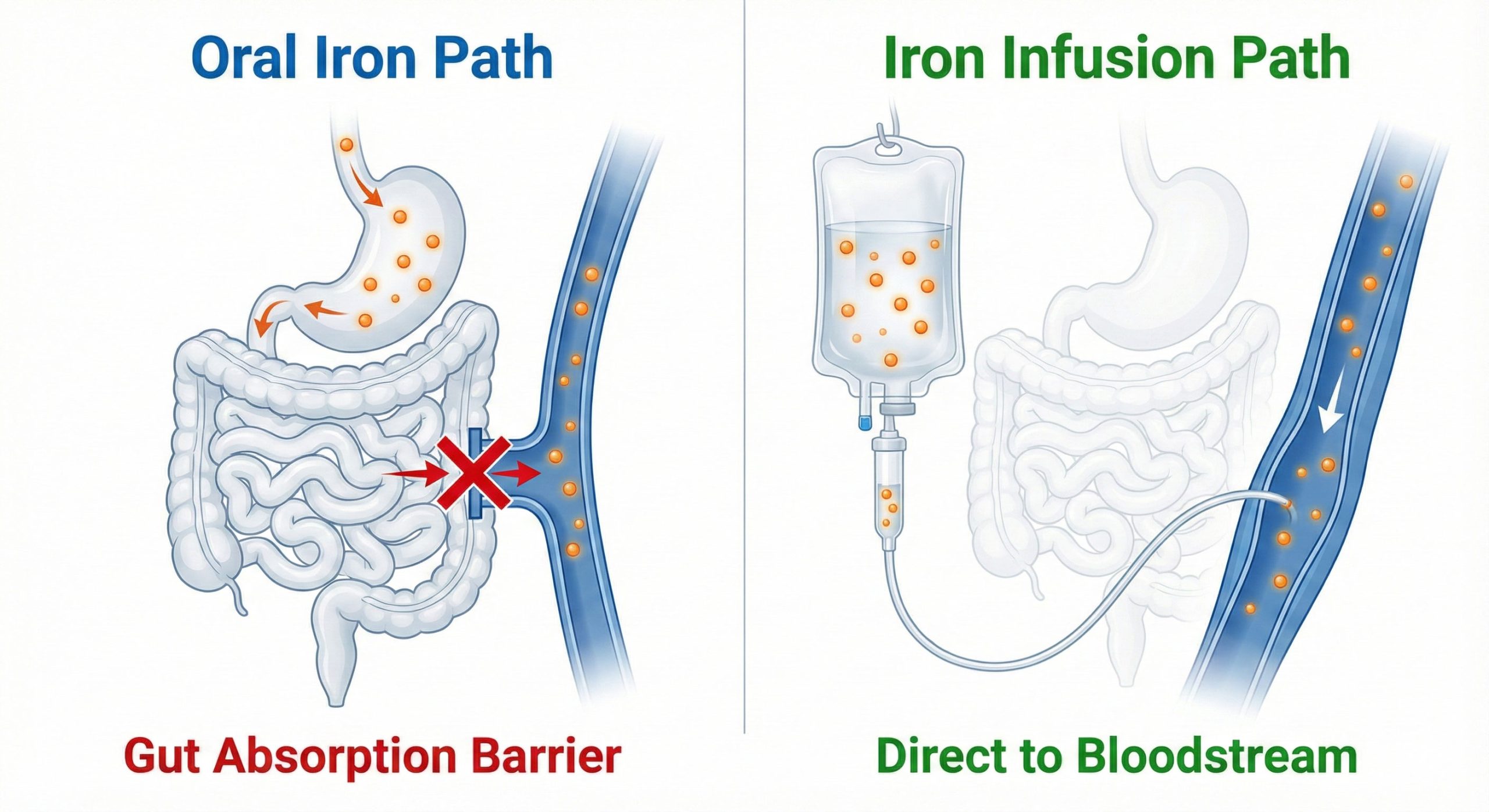Iron is a mineral essential to the body’s ability to transport oxygen, maintain energy levels, and support immunity. Low iron levels are surprisingly common, especially among women, people with chronic health conditions, and those with dietary limitations. If left unaddressed, iron deficiency can gradually progress into iron deficiency anaemia, a more severe condition that affects quality of life and overall health.
In Australia, treatment may involve dietary adjustments, supplements, or medical therapies. For people who require intravenous support, an iron infusion clinic in Melbourne can provide treatment under the guidance of a qualified healthcare professional.
This article explores the key signs and symptoms that may indicate low iron levels, what to look out for, and when to consider medical evaluation.
Understanding Iron’s Role in the Body
Iron is a critical component of haemoglobin, the molecule in red blood cells responsible for carrying oxygen. When iron levels drop, oxygen delivery throughout the body becomes less efficient, leading to fatigue and other functional impairments. Iron also plays a role in cognitive performance, temperature regulation, and immune defence.
The body cannot make iron on its own, so it must be absorbed through food or supplements. When intake or absorption is inadequate, or iron loss is excessive, levels can decline over time.
Early and Common Symptoms to Watch For
Persistent Fatigue
Ongoing tiredness, even after adequate rest, is one of the earliest signs of low iron. This occurs because the body struggles to deliver enough oxygen to tissues and muscles, leaving individuals feeling drained.
Pale Skin or Paleness of the Inner Eyelids
Low iron reduces the amount of haemoglobin in the blood, which can result in paler-than-usual skin. Paleness may also be noticeable in the gums, nail beds, or inner eyelids.
Shortness of Breath During Mild Activity
Feeling unusually breathless while walking up stairs or performing everyday tasks may be a result of reduced oxygen delivery linked to iron deficiency.
Frequent Headaches or Dizziness
Low oxygen levels can also affect the brain, resulting in recurring headaches, light-headedness, or dizziness, especially when standing up quickly.
Cold Hands and Feet
Iron helps regulate temperature and circulation. In some cases, low levels may lead to feeling cold more often, particularly in the extremities.
Lesser-Known but Clinically Relevant Symptoms
Brittle Nails or Hair Thinning
Changes in hair and nail quality, including brittle or spoon-shaped nails and increased hair shedding, may reflect underlying nutrient deficiencies, including iron.
Restless Legs or Unusual Sensations
Some individuals experience restless legs syndrome or a crawling, tingling sensation in the legs, particularly at night. This has been associated with iron deficiency in some cases.
Difficulty Concentrating or Brain Fog
A lack of oxygen to the brain can affect mental clarity, making it harder to focus, remember information, or maintain alertness throughout the day.
Mouth and Tongue Changes
Soreness, swelling, or smoothness of the tongue, along with mouth ulcers or cracks at the corners of the mouth, can be signs of low iron.
Cravings for Non-Food Items (Pica)
Some people with significant iron deficiency develop cravings for substances like ice, chalk, or dirt. This is a medical condition known as pica and should always prompt further investigation.
Who Is at Greater Risk?
Certain groups are more likely to experience low iron levels:
- Women with heavy menstrual bleeding
- Pregnant women
- Individuals with gastrointestinal conditions like coeliac disease or IBD
- People following vegetarian or vegan diets
- Those with chronic inflammation or bleeding disorders
Understanding risk factors helps guide appropriate testing and early intervention.
How Iron Deficiency Is Diagnosed
Iron levels are measured using a range of blood tests. These may include:
- Serum ferritin (reflects iron stores)
- Haemoglobin and haematocrit (to assess for anaemia)
- Transferrin saturation and serum iron (measures of circulating iron)
A GP or specialist will interpret these results based on symptoms, history, and any contributing conditions.
Why Early Recognition Matters
Recognising and addressing low iron early can help prevent the development of iron deficiency anaemia and reduce long-term health impacts. Left untreated, iron deficiency can affect immune resilience, physical performance, cognitive function, and overall quality of life.
Timely intervention may include dietary adjustments, oral supplements, or iron infusions, depending on the severity and cause of the deficiency.
When to Seek Medical Advice
If you experience ongoing fatigue, breathlessness, changes in skin tone, or any other persistent symptoms described above, it is important to seek medical evaluation. A healthcare professional can arrange appropriate testing and determine whether further support is needed.
Iron supplements or infusions should not be started without medical guidance, as excess iron can also be harmful in certain situations.
FAQs
Q1: Can low iron exist without anaemia?
A1: Yes. Iron stores can be depleted before anaemia develops. This is sometimes called “non-anaemic iron deficiency” and may still cause symptoms such as fatigue and brain fog.
Q2: How long does it take to correct low iron levels?
A2: It depends on the cause and severity. Oral supplements may take several weeks to months to restore levels, while infusions can provide faster improvement when appropriate.
Q3: Can diet alone fix iron deficiency?
A3: Mild deficiencies may improve with dietary changes, but moderate to severe cases often require supplementation or infusions, particularly if absorption is impaired.
Q4: Are iron supplements safe?
A4: Iron supplements are safe when used under medical supervision, but they can cause side effects such as constipation or nausea. They are not appropriate for everyone.
Q5: Is it normal to feel tired all the time?
A5: Persistent fatigue is not normal and may indicate a medical issue such as low iron. It should always be investigated by a healthcare provider.
Disclaimer
This article is for informational purposes only and does not constitute medical advice. Always consult a qualified healthcare provider before starting or changing any treatment plan. Iron deficiency should be diagnosed and managed under appropriate clinical supervision.



